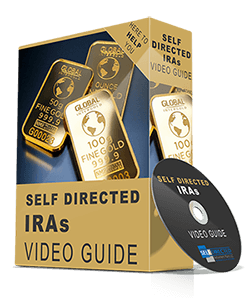Can you roll over a pension plan into an IRA? Yes, provided it meets two criteria: the pension plan is a “qualified employee plan” (if you’ve been deferring tax on your contributions, your plan is most likely a qualified plan), and you must have left the company or your employer intends to close the pension plan.
What to Consider Before a Pension Rollover to an IRA?
There are several factors you should consider when deciding to roll over your pension plan to an IRA.
- What are your investment goals, time horizons, and risk tolerance?
An IRA offers a wide variety of investment options that a company pension plan doesn’t. You are not limited to stocks, mutual funds, and bonds; you can choose a wide variety, including real estate and precious metals, among others. You can decide on the investment types after considering your investment goals, risk tolerance, and time horizon. - When do you plan to retire?
A company pension plan allows you to take a distribution from your retirement account at age 55 under certain circumstances. However, if you do a rollover to an IRA, you are now subject to IRA rules meaning you can take a penalty-free distribution only after you are 59 ½. If you take it before 59 ½, you will have to pay a 10% penalty on the distribution.
Does your company pension plan also include the distribution of the company’s stock?
If your pension plan includes company stock, you may want to take the distribution of the company stock only after you retire and when you are in a lower tax bracket. If you take a distribution before you are 59 ½, you’ll have to pay a 10% penalty and tax on your distribution. If you take a distribution after 59 ½, the 10% penalty will be excluded, but your distribution will be taxed as regular income.
Pros and Cons of Rolling Over a Pension Into an IRA
Rolling Over a Pension Into an IRA: The Pros
Some of the biggest benefits of rolling over your pension plan into an IRA include:
- You have a vast range of investment options.
An IRA gives you the freedom to invest in a wide range of traditional investments such as stocks, mutual funds, bonds, index funds, etc., which are not available with pension plans. You can also look at nontraditional (alternative) investments such as a real estate for the first time. You can choose the investments according to your risk appetite and preference. - You have better withdrawal flexibility.
Pension plans usually have limitations on when and how to make the withdrawal. However, a rollover of your pension plan into an IRA gives you greater flexibility. You can withdraw funds before retirement and as many times as you want. However, withdrawing before retirement can attract taxes and penalties. - You avoid paying taxes.
Rolling over your pension directly to a traditional IRA will not attract taxes or penalties on the distribution. However, if you roll over to a Roth IRA, it will be taxed, but the withdrawals from a Roth IRA are tax-free. - You have greater control
With an IRA, you have greater control over your savings. You have the choice to decide where to open an IRA and figure out the best asset allocation in your portfolio based on your risk profile. Even if you change jobs, you can keep your IRA account while continuing to save for your retirement.
Rolling Over a Pension Into an IRA: The Cons
Although the benefits are many, the rollover of your pension plan into an IRA has a few disadvantages as follows:
- You don’t have an option to take a personal loan.
When you roll over your pension to an IRA, you lose the ability to borrow from your retirement savings. If you are in urgent need of money, you are left with the option of making an early withdrawal, which attracts a 10% penalty plus tax. - You cannot take a distribution before 59 ½.
With the pension plans, you can take a distribution without penalty when you retire or leave the company at age 55. But when you roll over your pension plan to an IRA, you must wait until you reach 59 ½ to take a penalty-free distribution. If you take a distribution before age 59 ½, you must pay a 10% penalty on the withdrawn amount, losing a significant amount of your retirement money. - You lose creditor protection.
Your retirement savings in a retirement plan are creditor protected. This means that your creditors cannot take your funds in bankruptcy situations or during collection. However, when you roll over the funds into an IRA, you lose that protection.
How to Rollover a Pension Plan
Some of the key methods of a rollover to an IRA include:
- Direct Method – The rollover into an IRA is extremely simple if you do it through the direct method. You just :
- Set up an IRA.
- Request your employer to prepare the paperwork required to start the rollover process.
- Request your IRA custodian to initiate a “direct” rollover. This ensures that money is directly transferred from one account to the other.
- Indirect Method – In the indirect method, you have the amount in the pension plan is directly paid to you. However, you have 60 days to redeposit the money into an IRA; otherwise, it will be considered as a distribution, and you will be charged a penalty of 10%, plus tax if you are under 55. Moreover, the plan administrator will withhold 20% of the account balance as tax to be sent to the IRS. This money is later credited as a tax credit.
- Lump Sum Payout – If you are 55 or older when the plan is closed, or you leave the company, you can take the pension as a lump sum distribution. This will not trigger the 10% early withdrawal penalty. However, the distribution will be considered as ordinary income, and tax will be charged the year you take the money.
Benefits of Rolling Over to a Self-Directed IRA
Here are a few reasons why a self-directed IRA is a great option if you need to roll over your pension or any eligible 401(k):
- Better investment options, such as real estate, startups, peer-to-peer lending, etc.
- When you own a wide variety of asset classes, you improve your ability to withstand market volatility.
- You are in control of your investment portfolio.
If done correctly, rollovers of pension plans are tax neutral. If done incorrectly, there’s a risk of the IRS taking a slice of your pension pie. If you want to do it right, get in touch with a financial expert who can do the rollover correctly with reduced tax implications.

My goal is to assist clients/investors in their quest for financial freedom and creating generational wealth through one on one consultation and an abundance of online tools to educate. For the past 5 years I have been a private pension plan consultant with Self Directed Retirement Plans working directly with my partner Rick Pendykoski (owner) or you can .




